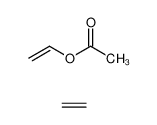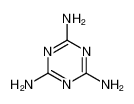| Product name | aziridine |
|---|
| Product number | - |
|---|---|
| Other names | Ethylimine |
| Identified uses | For industry use only. Ethyleneimine is used in polymerization products; as a monomer for polyethyleneimine; as a comonomer for polymers (e.g., with ethylenediamine); and in paper and textile chemicals, adhesives, binders, petroleum refining chemicals, fuels and lubricants, coating resins, varnishes, lacquers, agricultural chemicals, cosmetics, ion exchange resins, photographic chemicals, and surfactants. |
|---|---|
| Uses advised against | no data available |
| Company | MOLBASE (Shanghai) Biotechnology Co., Ltd. |
|---|---|
| Address | Floor 4 & 5, Building 12, No. 1001 North Qinzhou Road, Xuhui District, Shanghai, China |
| Telephone | +86(21)64956998 |
| Fax | +86(21)54365166 |
| Emergency phone number | +86-400-6021-666 |
|---|---|
| Service hours | Monday to Friday, 9am-5pm (Standard time zone: UTC/GMT +8 hours). |
Flammable liquids, Category 2
Acute toxicity - Oral, Category 2
Acute toxicity - Dermal, Category 1
Skin corrosion, Category 1B
Acute toxicity - Inhalation, Category 2
Germ cell mutagenicity, Category 1B
Carcinogenicity, Category 1B
Hazardous to the aquatic environment, long-term (Chronic) - Category Chronic 2
2.2 GHS label elements, including precautionary statements| Pictogram(s) | 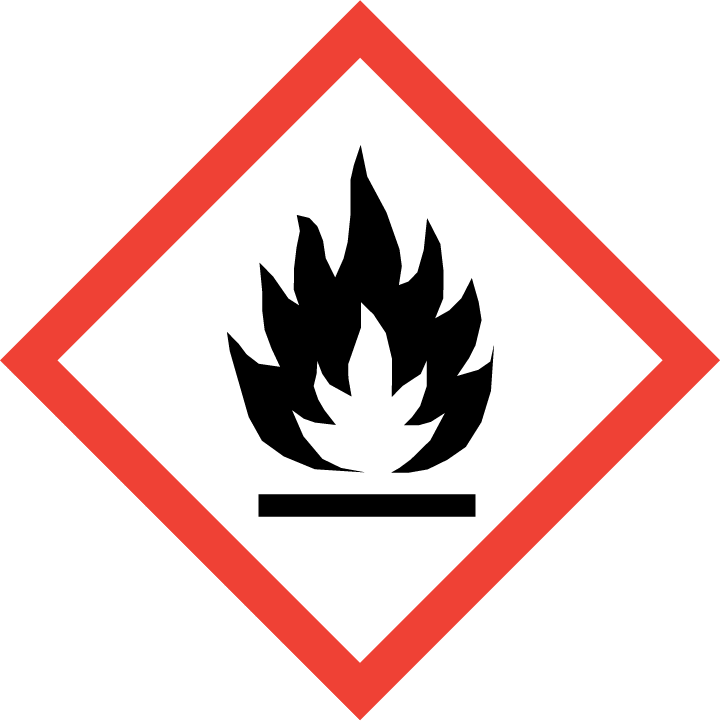 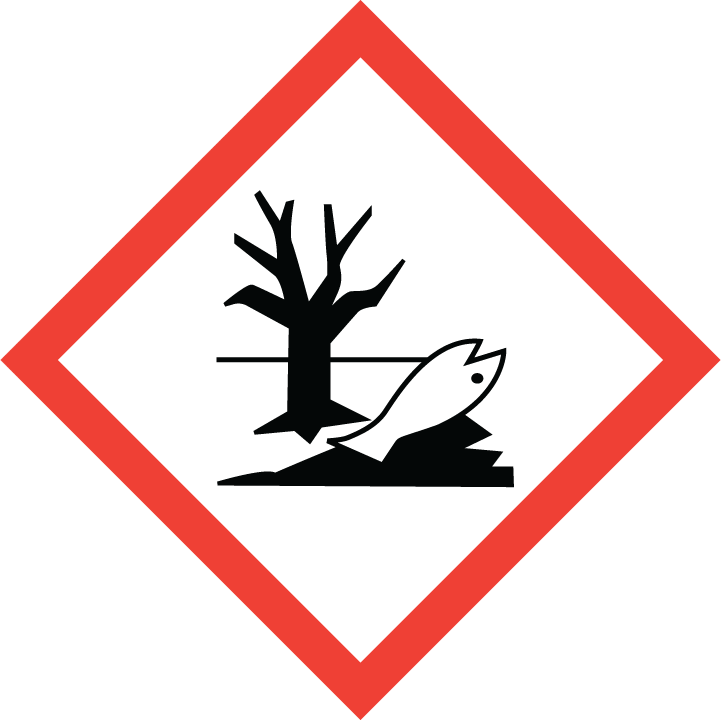 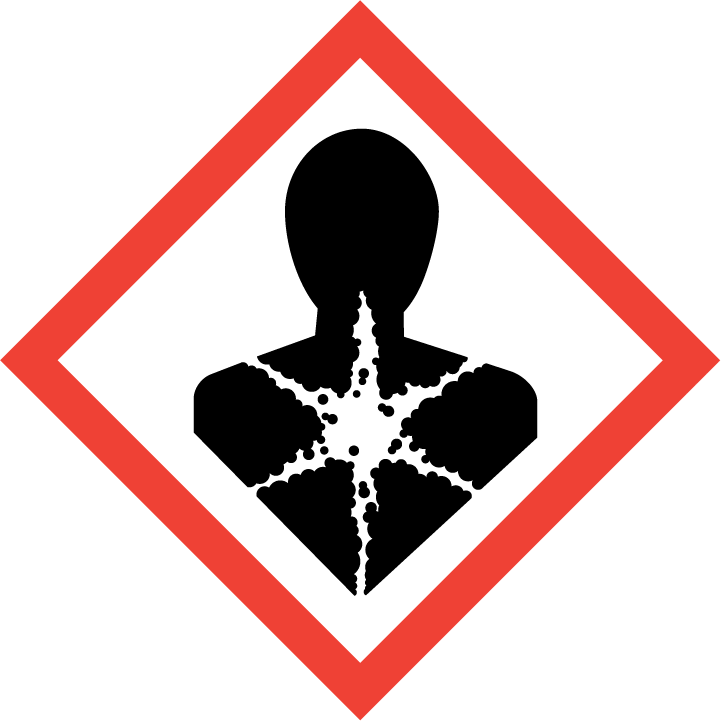 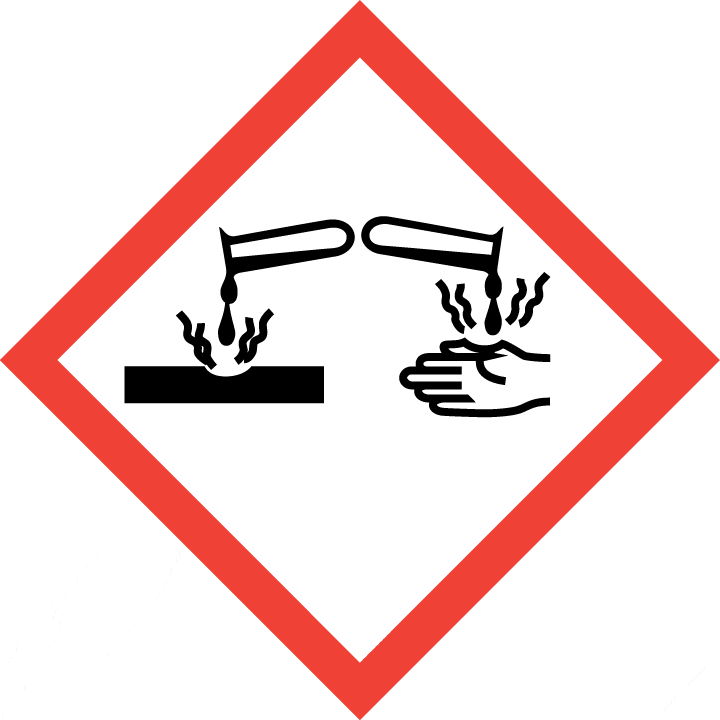  |
|---|---|
| Signal word | Danger |
| Hazard statement(s) | H225 Highly flammable liquid and vapour H300 Fatal if swallowed H310 Fatal in contact with skin H314 Causes severe skin burns and eye damage H330 Fatal if inhaled H340 May cause genetic defects H350 May cause cancer H411 Toxic to aquatic life with long lasting effects |
| Precautionary statement(s) | |
| Prevention | P210 Keep away from heat, hot surfaces, sparks, open flames and other ignition sources. No smoking. P233 Keep container tightly closed. P240 Ground and bond container and receiving equipment. P241 Use explosion-proof [electrical/ventilating/lighting/...] equipment. P242 Use non-sparking tools. P243 Take action to prevent static discharges. P280 Wear protective gloves/protective clothing/eye protection/face protection. P264 Wash ... thoroughly after handling. P270 Do not eat, drink or smoke when using this product. P262 Do not get in eyes, on skin, or on clothing. P260 Do not breathe dust/fume/gas/mist/vapours/spray. P271 Use only outdoors or in a well-ventilated area. P284 [In case of inadequate ventilation] wear respiratory protection. P201 Obtain special instructions before use. P202 Do not handle until all safety precautions have been read and understood. P273 Avoid release to the environment. |
| Response | P303+P361+P353 IF ON SKIN (or hair): Take off immediately all contaminated clothing. Rinse skin with water [or shower]. P370+P378 In case of fire: Use ... to extinguish. P301+P310 IF SWALLOWED: Immediately call a POISON CENTER/doctor/… P321 Specific treatment (see ... on this label). P330 Rinse mouth. P302+P352 IF ON SKIN: Wash with plenty of water/... P310 Immediately call a POISON CENTER/doctor/… P361+P364 Take off immediately all contaminated clothing and wash it before reuse. P301+P330+P331 IF SWALLOWED: Rinse mouth. Do NOT induce vomiting. P363 Wash contaminated clothing before reuse. P304+P340 IF INHALED: Remove person to fresh air and keep comfortable for breathing. P305+P351+P338 IF IN EYES: Rinse cautiously with water for several minutes. Remove contact lenses, if present and easy to do. Continue rinsing. P320 Specific treatment is urgent (see ... on this label). P308+P313 IF exposed or concerned: Get medical advice/ attention. P391 Collect spillage. |
| Storage | P403+P235 Store in a well-ventilated place. Keep cool. P405 Store locked up. P403+P233 Store in a well-ventilated place. Keep container tightly closed. |
| Disposal | P501 Dispose of contents/container to ... |
none
3.Composition/information on ingredients 3.1 Substances| Chemical name | Common names and synonyms | CAS number | EC number | Concentration |
|---|---|---|---|---|
| aziridine | aziridine | 151-56-4 | none | 100% |
Consult a physician. Show this safety data sheet to the doctor in attendance.
If inhaledFresh air, rest. Half-upright position. Artificial respiration may be needed. Refer for medical attention.
In case of skin contactRemove contaminated clothes. Rinse skin with plenty of water or shower. Refer for medical attention .
In case of eye contactFirst rinse with plenty of water for several minutes (remove contact lenses if easily possible), then refer for medical attention.
If swallowedRinse mouth. Do NOT induce vomiting. Give one or two glasses of water to drink. Refer for medical attention .
4.2 Most important symptoms/effects, acute and delayedEthyleneimine is classified as extremely toxic with a probable oral lethal dose of 5-50 mg/kg which is approximately 7 drops to 1 teaspoonful for a 70 kg (150 lb.) person. Ethyleneimine gives inadequate warning when over-exposure is by inhalation or skin absorption. It is a severe blistering agent, causing third degree chemical burns of the skin. Also, it has a corrosive effect on mucous membranes and may cause scarring of the esophagus. It is corrosive to eye tissue and may cause permanent corneal opacity and conjunctival scarring. Severe exposure may result in overwhelming pulmonary edema. Renal damage has been described. Hemorrhagic congestion of all internal organs has been observed. (EPA, 1998)
4.3 Indication of immediate medical attention and special treatment needed, if necessaryBasic treatment: Establish a patent airway. Suction if necessary. Watch for signs of respiratory insufficiency and assist ventilations if necessary. Administer oxygen by nonrebreather mask at 10 to 15 L/min. Monitor for pulmonary edema and treat if necessary ... . Monitor for shock and treat if necessary ... . Anticipate seizures and treat if necessary ... . For eye contamination, flush eyes immediately with water. Irrigate each eye continuously with normal saline during transport ... . Do not use emetics. For ingestion, rinse mouth and administer 5 mg/kg up to 200 ml of water for dilution if the patent can swallow, has a strong gag reflex, and does not drool. Administer activated charcoal ... . Cover skin bums with dry sterile dressings after decontamination ... . /Organic bases/Amines and related compounds/
5.Fire-fighting measures 5.1 Extinguishing media Suitable extinguishing mediaUse dry chemical, "alcohol resistant" foam, carbon dioxide, or water spray. Water may be ineffective. Use water spray to keep fire-exposed containers cool. Approach fire from upwind to avoid hazardous vapors & toxic decomp products. Explosive decomp may occur under fire conditions. Fight fire from protected location or maximum possible distance.
5.2 Specific hazards arising from the chemicalIrritating vapors are generated when heated. Vapor is heavier than air and may travel a considerable distance to a source of ignition and flash back. May polymerize in fires with evolution of heat and container rupture. Runoff to sewer may create fire or explosion hazard. Ethyleneimine vapors are not inhibited and may form polymers in vents or flame arresters, resulting in stopping of the vents. Toxic oxides of nitrogen are produced during combustion. Upon treatment with sodium hypochlorite, it gives off the explosive compound 1-chloroazidine. Avoid acids, sodium hypochlorite. If heated under pressure, instability may result. Hazardous polymerization may occur. Avoid contact with silver or aluminum. Explosive polymerization may occur upon contact with acids. Polymerization is catalyzed by carbon dioxide. (EPA, 1998)
5.3 Special protective actions for fire-fightersWear self-contained breathing apparatus for firefighting if necessary.
6.Accidental release measures 6.1 Personal precautions, protective equipment and emergency proceduresUse personal protective equipment. Avoid dust formation. Avoid breathing vapours, mist or gas. Ensure adequate ventilation. Evacuate personnel to safe areas. Avoid breathing dust. For personal protection see section 8.
6.2 Environmental precautionsEvacuate danger area! Consult an expert! Personal protection: complete protective clothing including self-contained breathing apparatus. Remove all ignition sources. Do NOT let this chemical enter the environment. Collect leaking and spilled liquid in sealable containers as far as possible. Absorb remaining liquid in sand or inert absorbent. Then store and dispose of according to local regulations.
6.3 Methods and materials for containment and cleaning upCover with a 9:1 mixture of sand and soda ash. After mixing, transfer into a paper carton.
7.Handling and storage 7.1 Precautions for safe handlingAvoid contact with skin and eyes. Avoid formation of dust and aerosols. Avoid exposure - obtain special instructions before use.Provide appropriate exhaust ventilation at places where dust is formed. For precautions see section 2.2.
7.2 Conditions for safe storage, including any incompatibilitiesFireproof. Separated from acids, oxidants and food and feedstuffs. Dry. Store only if stabilized.Can be stored for some time over a few pellets of sodium hydroxide. /In a closed container/
8.Exposure controls/personal protection 8.1 Control parameters Occupational Exposure limit valuesNIOSH considers ethyleneimine to be a potential occupational carcinogen.
NIOSH usually recommends that occupational exposures to carcinogens be limited to the lowest feasible concn.
Biological limit valuesno data available
8.2 Appropriate engineering controlsHandle in accordance with good industrial hygiene and safety practice. Wash hands before breaks and at the end of workday.
8.3 Individual protection measures, such as personal protective equipment (PPE) Eye/face protectionSafety glasses with side-shields conforming to EN166. Use equipment for eye protection tested and approved under appropriate government standards such as NIOSH (US) or EN 166(EU).
Skin protectionWear impervious clothing. The type of protective equipment must be selected according to the concentration and amount of the dangerous substance at the specific workplace. Handle with gloves. Gloves must be inspected prior to use. Use proper glove removal technique(without touching glove's outer surface) to avoid skin contact with this product. Dispose of contaminated gloves after use in accordance with applicable laws and good laboratory practices. Wash and dry hands. The selected protective gloves have to satisfy the specifications of EU Directive 89/686/EEC and the standard EN 374 derived from it.
Respiratory protectionWear dust mask when handling large quantities.
Thermal hazardsno data available
9.Physical and chemical properties| Physical state | colourless liquid with an ammonia-like smell |
|---|---|
| Colour | Oily, water-white liquid |
| Odour | Pungent, ammonia-like odor |
| Melting point/ freezing point | -78ºC |
| Boiling point or initial boiling point and boiling range | 56ºC |
| Flammability | Class IB Flammable Liquid: Fl.P. below 22.78°C and BP at or above 37.78°C.Highly flammable. Gives off irritating or toxic fumes (or gases) in a fire. |
| Lower and upper explosion limit / flammability limit | Lower flammable limit: 3.3% by volume; Upper flammable limit: 54.8% by volume |
| Flash point | -11ºC |
| Auto-ignition temperature | 320°C (USCG, 1999) |
| Decomposition temperature | no data available |
| pH | Strongly alkaline |
| Kinematic viscosity | no data available |
| Solubility | In water:miscible |
| Partition coefficient n-octanol/water (log value) | log Kow = -0.28 (est) |
| Vapour pressure | 2610mmHg at 25°C |
| Density and/or relative density | 0.874g/cm3 |
| Relative vapour density | 1.48 (EPA, 1998) (Relative to Air) |
| Particle characteristics | no data available |
no data available
10.2 Chemical stabilityStable under recommended storage conditions.
10.3 Possibility of hazardous reactionsThe vapour is heavier than air and may travel along the ground; distant ignition possible. The vapour mixes well with air, explosive mixtures are easily formed.ETHYLENEIMINE vapors are not inhibited and may form polymers in vents or flame arresters, resulting in stopping of the vents. Produces toxic oxides of nitrogen during combustion. Reacts with sodium hypochlorite and other chlorinating agents to give the explosive compound 1-chloroazidine. Decomposes if heated under pressure. or else hazardous polymerization may occur. Incompatible with silver or aluminum, which induce polymerization May polymerize explosively upon contact with acids. Polymerization is catalyzed by carbon dioxide [EPA, 1998].
10.4 Conditions to avoidno data available
10.5 Incompatible materials/Aziridine/ gives the explosive 1-chloroazidine on treatment with /chlorinating agents/ eg sodium hypochlorite solution.
10.6 Hazardous decomposition productsWhen heated to decomposition it emits acrid smoke and irritating fumes.
11.Toxicological information Acute toxicity- Oral: LD50 Rat oral 15 mg/kg
- Inhalation: LC50 Cat inhalation 250 ppm/30 min
- Dermal: no data available
no data available
Serious eye damage/irritationno data available
Respiratory or skin sensitizationno data available
Germ cell mutagenicityno data available
CarcinogenicityEvaluation: No epidemiological data relevant to the carcinogenicity of aziridine were available. There is limited evidence in experimental animals for the carcinogenicity of aziridine. Overall Evaluation: Aziridine is possibly carcinogenic to humans (Group 2B). In making the overall evaluation, the Working Group took into consideration that aziridine is a direct acting alkylating agent which is mutagenic in a wide range of test systems and forms DNA adducts that are promutagenic.
Reproductive toxicityNo information is available on the reproductive or developmental effects of ethyleneimine in humans or animals.
STOT-single exposureno data available
STOT-repeated exposureno data available
Aspiration hazardno data available
12.Ecological information 12.1 Toxicity- Toxicity to fish: no data available
- Toxicity to daphnia and other aquatic invertebrates: LC50 Daphnia magna (Water flea) 14 mg/L/24 hr; static /formulated products
- Toxicity to algae: no data available
- Toxicity to microorganisms: no data available
no data available
12.3 Bioaccumulative potentialAn estimated BCF of 3 was calculated for ethyleneimine(SRC), using an estimated log Kow of -0.28(1) and a regression-derived equation(2). According to a classification scheme(3), this BCF suggests the potential for bioconcentration in aquatic organisms is low(SRC).
12.4 Mobility in soilThe Koc of ethyleneimine is estimated as 2(SRC), using an assigned value for water solubility of 1X10+6 mg/L (miscible)(1) and a regression-derived equation(2). According to a classification scheme(3), this estimated Koc value suggests that ethyleneimine is expected to have very high mobility in soil. However, the pKa of ethyleneimine is 8.04(4), indicating that this compound will partially exist as a cation the environment and cations generally do adsorb more strongly to soils containing organic carbon and clay than their neutral counterparts(5). Ethyleneimine readily complexes with metal salts(6) which may be present in soil(SRC).
12.5 Other adverse effectsno data available
13.Disposal considerations 13.1 Disposal methods ProductThe material can be disposed of by removal to a licensed chemical destruction plant or by controlled incineration with flue gas scrubbing. Do not contaminate water, foodstuffs, feed or seed by storage or disposal. Do not discharge to sewer systems.
Contaminated packagingContainers can be triply rinsed (or equivalent) and offered for recycling or reconditioning. Alternatively, the packaging can be punctured to make it unusable for other purposes and then be disposed of in a sanitary landfill. Controlled incineration with flue gas scrubbing is possible for combustible packaging materials.
14.Transport information 14.1 UN Number| ADR/RID: UN1185 | IMDG: UN1185 | IATA: UN1185 |
| ADR/RID: ETHYLENEIMINE, STABILIZED |
| IMDG: ETHYLENEIMINE, STABILIZED |
| IATA: ETHYLENEIMINE, STABILIZED |
| ADR/RID: 6.1(a) | IMDG: 6.1(a) | IATA: 6.1(a) |
| ADR/RID: I | IMDG: I | IATA: I |
| ADR/RID: yes | IMDG: yes | IATA: yes |
no data available
14.7 Transport in bulk according to Annex II of MARPOL 73/78 and the IBC Codeno data available
15.Regulatory information 15.1 Safety, health and environmental regulations specific for the product in question| Chemical name | Common names and synonyms | CAS number | EC number |
|---|---|---|---|
| aziridine | aziridine | 151-56-4 | none |
| European Inventory of Existing Commercial Chemical Substances (EINECS) | Listed. | ||
| EC Inventory | Listed. | ||
| United States Toxic Substances Control Act (TSCA) Inventory | Listed. | ||
| China Catalog of Hazardous chemicals 2015 | Listed. | ||
| New Zealand Inventory of Chemicals (NZIoC) | Listed. | ||
| Philippines Inventory of Chemicals and Chemical Substances (PICCS) | Listed. | ||
| Vietnam National Chemical Inventory | Listed. | ||
| Chinese Chemical Inventory of Existing Chemical Substances (China IECSC) | Listed. | ||
| Creation Date | Aug 19, 2017 |
|---|---|
| Revision Date | Aug 19, 2017 |
- CAS: Chemical Abstracts Service
- ADR: European Agreement concerning the International Carriage of Dangerous Goods by Road
- RID: Regulation concerning the International Carriage of Dangerous Goods by Rail
- IMDG: International Maritime Dangerous Goods
- IATA: International Air Transportation Association
- TWA: Time Weighted Average
- STEL: Short term exposure limit
- LC50: Lethal Concentration 50%
- LD50: Lethal Dose 50%
- EC50: Effective Concentration 50%
- IPCS - The International Chemical Safety Cards (ICSC), website: http://www.ilo.org/dyn/icsc/showcard.home
- HSDB - Hazardous Substances Data Bank, website: https://toxnet.nlm.nih.gov/newtoxnet/hsdb.htm
- IARC - International Agency for Research on Cancer, website: http://www.iarc.fr/
- eChemPortal - The Global Portal to Information on Chemical Substances by OECD, website: http://www.echemportal.org/echemportal/index?pageID=0&request_locale=en
- CAMEO Chemicals, website: http://cameochemicals.noaa.gov/search/simple
- ChemIDplus, website: http://chem.sis.nlm.nih.gov/chemidplus/chemidlite.jsp
- ERG - Emergency Response Guidebook by U.S. Department of Transportation, website: http://www.phmsa.dot.gov/hazmat/library/erg
- Germany GESTIS-database on hazard substance, website: http://www.dguv.de/ifa/gestis/gestis-stoffdatenbank/index-2.jsp
- ECHA - European Chemicals Agency, website: https://echa.europa.eu/
















